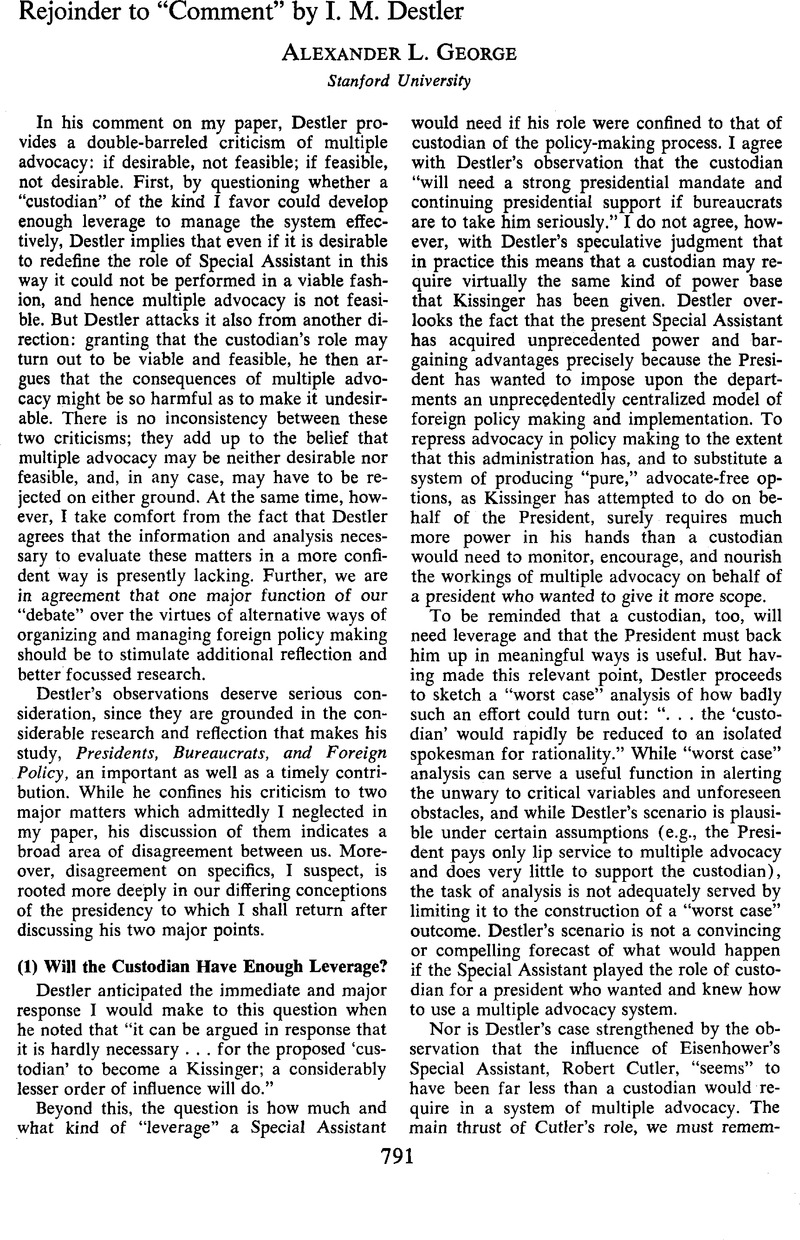Article contents
Rejoinder to “Comment” by I. M. Destler
Published online by Cambridge University Press: 01 August 2014
Abstract

- Type
- Articles
- Information
- Copyright
- Copyright © American Political Science Association 1972
References
1 In addition to the useful role that multiple advocacy played in several cases discussed in my paper (Indochina-1954, MLF, and Cuban missile crisis), reference can be made to a number of other occasions on which multiple advocacy appears to have helped to curb choice of questionable policy options: the Formosa Straits crisis of 1954–55; the Quemoy crisis of 1958; the Laos crisis of 1961.
2 It is unfortunate that space limitations prevented Destler from commenting on most of the key issues I raised with regard to the present NSC system: (1) the costs of so highly centralized a system; (2) the limitations of its search for “pure,” advocate-free options; (3) the risks of the severe role conflict imbedded in the present Special Assistant's position; (4) the possibility that so tight and centralized a presidential control over foreign policy making in the executive branch pushes it in the direction of a more “closed” system and further strengthens the President vis-à-vis Congress.
Because Destler has not stated his views on these key issues, the basis for his apparent support of the present NSC concept is not entirely clear. One possibility is that Destler believes that I have grossly exaggerated the costs and limitations of the present NSC. But, alternatively, his silence on these issues could signify that he believes that its costs and limitations are acceptable because the disadvantages of conceivable alternative systems are assessed by him to be even greater.
3 Cronin, T. E., “‘Everybody Believes in Democracy Until He Gets To The White House…’: An Examination of White House-Departmental Relations,” Law and Contemporary Problems, Vol. 35, No. 3 (Summer, 1970), published 07, 1971CrossRefGoogle Scholar; School of Law, Duke University, p. 622–3.
4 Cronin, p. 624.
5 See the excellent critique provided by Cronin, Thomas E., “The Textbook Presidency and Political Science,” APSA paper, Los Angeles, 09 1970 (reprinted in the Congressional Record, October 5, 1970; Vol. 116. No. 174)Google Scholar; also, Andrews, William G., “The Presidency, Congress, and Constitutional Theory,” APSA paper, Chicago, 09, 1971Google Scholar.
- 3
- Cited by





Comments
No Comments have been published for this article.